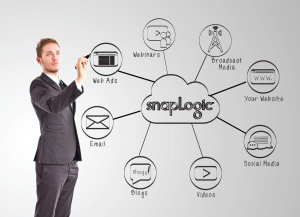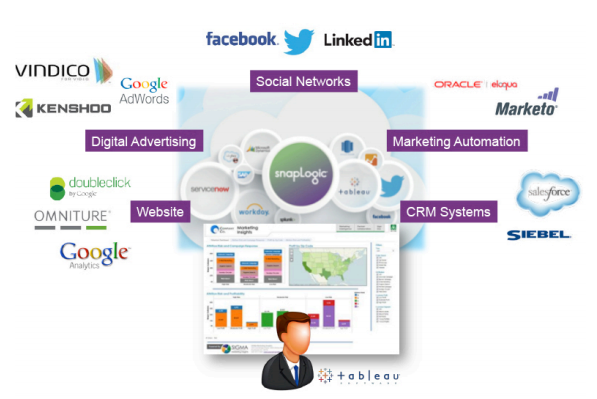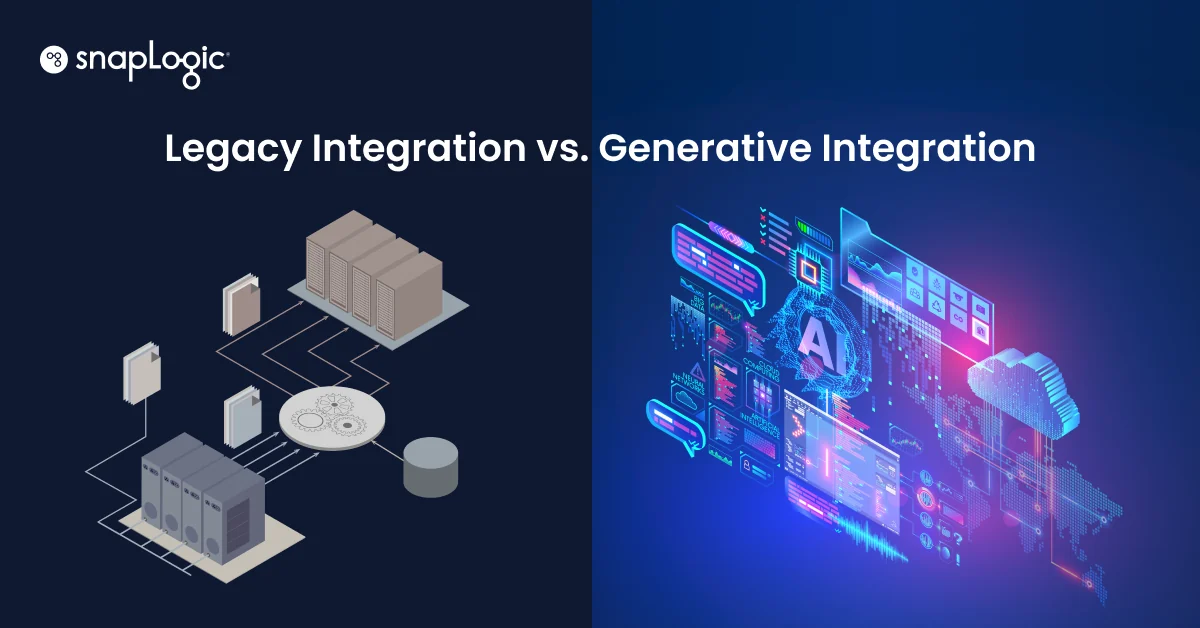
Products, services, new releases and offers get pushed out faster than ever, requiring that today’s digital marketer stays on top of trends, takes advantage of opportunities and analyzes data to a greater extent than has been required before. Essentially, the modern digital marketer’s role and responsibilities are becoming increasingly complex and require management of various online channels while staying on top of a constantly changing market and discovering more and more new ways to market. Many of these new and expanding marketing tactics – through social channels, applications, analytics sources and more – provide individual value but fail to give the marketer on all-inclusive and fully comprehensive view of what they’re doing right, and what can be done to do better.
This is why enterprise integration needs are now essential for today’s data-driven digital marketer. SnapLogic Director of Product Marketing Maneesh Joshi was recently featured in the Wired Innovation Insights blog for his expertise on the modern digital marketer and the benefits of adopting an integration solution for “the real insights [that] are often hidden in data across multiple applications, such as customer relationship management (CRM), marketing automation systems, in complex spreadsheets or locked in an enterprise data warehouse.” In the article, Maneesh presents the following questions as difficult for digital marketers to answer when pulling reports and analytics from various data sources:
- What is causing a spike in sales of a certain product that we’re not actively promoting?
- How do we take advantage of this opportunity before it evaporates?
- How do we minimize our response times to such trends in the future?
When operating at cloud speed, like most marketers are today, frustrations can arise because of the inability to understand, analyze and engage with target audiences and qualified leads in a timely fashion. But with the constant communication channels across social media and other online platforms, this becomes a necessity. In the Wired post, Maneesh goes on to explain the three stages of digital marketing, including how digital marketing matures and what the digital marketer ultimately can accomplish. The stages are:
- Aggregation and Integration – includes the importance of cross-channel visibility and gathering information across those multiple channels, as well as taking a comprehensive approach to aggregating data to deliver winning insights.
- Automation – addresses responding to the trends detected in Stage 1 and, based on those insights, deciding for example to increase or decrease spend across channels and free up marketing resources to focus on strategies rather than tedious data analysis.
- Self-Optimizing – recognizes the ideal to go beyond automation to create systems that implement strategic tactics to ensure that ever-changing market opportunities are never lost.
The increasing demands for business intelligence across all online marketing channels are robust and require a whole new way to look at digital marketing. Learn more about how SnapLogic can be used for marketing, including CRM integration and solutions for Social Media Integration. Our full whitepaper on this topic is available here, and you can view our recent webinar on the SnapLogic Integration Cloud for the latest on our elastic iPaaS solution for digital marketers.









